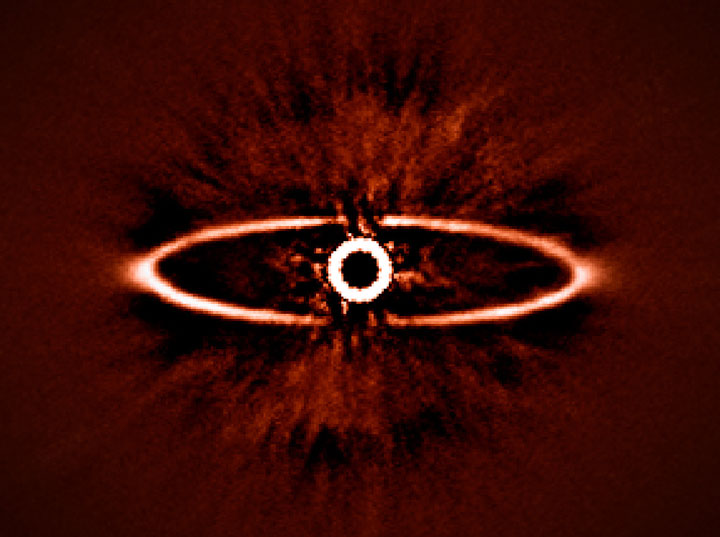TORONTO – No, you’re not looking at the Eye of Sauron from Lord of the Rings, but rather dust around the nearby star HR4796A in the constellation Centaurus.

The star lies more than 200 light-years from Earth.
This image is one of the first taken with a new set of eyes on the European Southern Observatory’s Very Large Telescope (VLT) in Chile. Though it sounds like it’s just one telescope, the VLT is actually an array of four 8.2-metre telescopes. This configuration allows it to take much more detailed observations of the sky.
READ MORE: Habitable planets–Is E.T. out there?
The new camera, called the Spectro-Polarimetric High-contrast Exoplanet REsearch instrument (SPHERE) was installed in May. Its main goal is to seek exoplanets using new adaptive optics and special detectors.
Astronomers looking to directly image an exoplanet (a planet around a star other than our own), face the task of trying to see it in the glare of the star itself. SPHERE’s design gives the image high contrast, making it easier to see a small planet.
This new technology allowed the telescope to capture unprecedented detail of the ring around the star, which is believed to lie about 10.5 billion kilometres from the star, the equivalent distance that separates Mars from Uranus in our own solar system.
READ MORE: There are billions of Earth-like, just-right planets out there, study says
The dust ring was left over from the formation of planets around the star, and is likely held in place by some gravitation force such as unseen planets.
The telescope also imaged Saturn’s largest moon, the cloud-covered Titan.
SPHERE was able to obtain fine detail of the moon, which lies about 1.3 billion km from Earth.



Comments